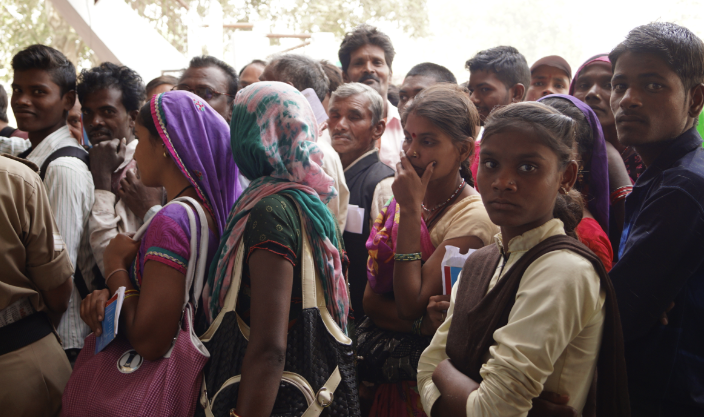The land question in India has recently gained extraordinary importance in the media, with various agitations and social movements advocating for land rights and against forced displacement. The historical significance of land rights and its association with tribal rebellions and uprisings against British imperialists has been largely overlooked by the media. This article explores the intersection of Special Economic Zones (SEZs) and the land question in India, highlighting the impact of SEZs on farmers, displacement, and the social and economic disparity in rural India.
Employment in SEZs
Despite the claims that Special Economic Zones (SEZs) generate employment and contribute to the country’s economic growth, the reality paints a different picture. The growth of employment in the organized sector, particularly in SEZs, has been rather negligible. One of the key reasons for this limited job creation is the rapid advancement of automation and technology, which significantly reduces the labor requirements in various industries.
SEZs, often touted as hubs for Information Technology (IT) and IT-enabled services (ITES), have not been able to live up to the promise of providing substantial employment opportunities. The reliance on automation and advanced technologies has replaced traditional labor-intensive processes, leading to a decline in the demand for human workers. As a result, the anticipated surge in job opportunities within the organized sector has not materialized as expected.
Moreover, another concerning factor lies in the provision that allows large SEZs to allocate up to 75% of their land for non-industrial purposes. While this may have been intended to promote diverse economic activities within the zones, it has also opened the door to potential land grabbing by private players, especially in the real estate sector. This loophole could result in the diversion of land away from industrial development towards speculative ventures.
The consequence of land grabbing for real estate speculation is twofold. Firstly, it diverts valuable land resources that could have been used for industrial purposes, thus hindering the development of crucial manufacturing and export-oriented industries. Secondly, it exacerbates the problem of unequal land distribution, as powerful private players may acquire large portions of land, leaving small and marginalized farmers at a further disadvantage.
To address these challenges, policymakers must reconsider the allocation of land within SEZs to strike a balance between industrial development and other activities. It is essential to ensure that sufficient land is dedicated to industries that can create employment opportunities for the local population and contribute to the overall economic growth. At the same time, regulations and safeguards should be put in place to prevent speculative land grabbing and protect the interests of vulnerable communities.
SEZs can still play a vital role in India’s economic development, but it requires a careful and comprehensive approach that considers the needs of various stakeholders. By focusing on inclusive and sustainable industrial growth within SEZs, India can harness the potential of these zones to foster economic progress, create meaningful employment, and uplift the living standards of its citizens. Only through well-thought-out policies and regulations can SEZs truly become engines of economic prosperity and social well-being for the country.
SEZs and the New Colonial Urbanization
SEZs have also emerged as a form of colonial urbanization, contributing to slum growth, displacement, and migration. Maharashtra, being a top destination for investment in India, hosts the highest number of SEZs. However, the rapid urban growth in the state has been artificial and driven by the devastation of agriculture, leading to slums and distressing living conditions for millions.
Comparison of SEZs in India
| State | Total Approved SEZs | SEZs with “In Principle” Approval | SEZs Notified After 2005 Act | SEZs Functional Before 2005 Act |
|---|---|---|---|---|
| Maharashtra | 89 | 32 | 57 | 12 |
| Uttar Pradesh | 45 | 21 | 14 | 10 |
| Tamil Nadu | 31 | 16 | 10 | 5 |
| Andhra Pradesh | 28 | 12 | 10 | 6 |
Conclusion
The issue of land rights and the establishment of Special Economic Zones in India are intertwined, with SEZs having significant implications for displacement, livelihoods, and socio-economic disparity in rural areas. Radical land reforms prioritizing “land to the tiller” remain critical to addressing the country’s socio-economic challenges and achieving equitable development. Balancing economic growth with social and environmental concerns is crucial for India’s sustainable future.
What are Special Economic Zones (SEZs) in India?
SEZs are designated areas of land owned and operated by private companies, considered foreign territory for trade, duties, and tariffs. These zones enjoy exemptions from custom duties, income tax, sales tax, and service tax, aimed at promoting exports and attracting foreign investment.
How do SEZs impact farmers and rural communities?
The establishment of SEZs often leads to the displacement of farmers and rural communities, resulting in loss of livelihoods and socio-economic disparities in rural areas.
Are SEZs successful in generating employment?
Despite claims of SEZs generating employment and boosting the economy, the growth of employment in the organized sector has been negligible. The concentration of automation in modern manufacturing limits labor requirements.
What challenges does India face in addressing the land question and socio-economic disparities?
India must prioritize radical land reforms, ensuring equitable distribution of land and livelihood opportunities. Balancing economic growth with social and environmental concerns is crucial for achieving sustainable development.
What is the relationship between SEZs and urbanization in India?
SEZs have contributed to a new form of colonial urbanization, often leading to slum growth and distress migration due to forced displacement from rural areas. The rise of SEZs has shaped urban growth patterns in states like Maharashtra.



